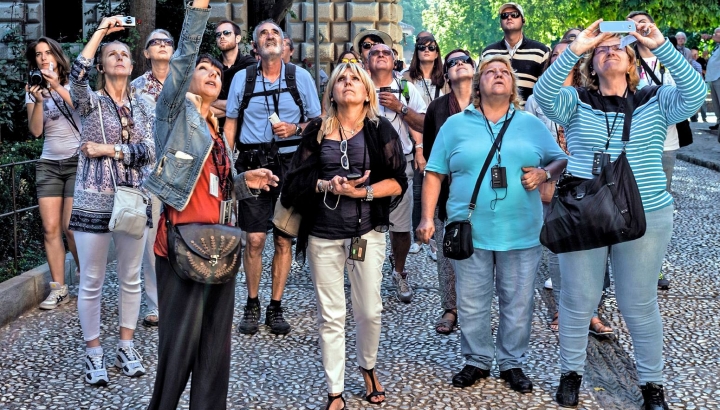One sector that’s improving with each year that passes is that of tourism. And 2015 was no exception.
Conflict in nearby countries, the depreciation of the euro against the dollar and British pound and the pull of the good weather in Spain has meant that the entry of tourists into this country grew at a rhythm of almost 5%.
Between the months of January and November, a total of 64.6 million international tourists holidayed in Spain. This is an increase of 4.8% and means that the likelihood of the total number of visitors to this country for the whole of 2015 will exceed 68 million.
In December 2014, 3.26 million tourists entered the country that month, so with an annual increase of 4.8%, it is expected that last month Spain will have received 3.42 million visitors. Added to the total for the first 11 months of the year of 64.62 million, December’s figure will take the total to just over 68.04 million.
According to the data published by the National Statistics Institute (INE), the three most important countries in terms of emitting tourists are the United Kingdom, France and Germany. Tourists from these three countries made up 55% of the total.
Due to the strength of the British pound, last year saw a rise in the number of British tourists, who consolidate their first position with 15 million visitors, 23% of the total.
In second place is France, with 11 million tourists entering its neighbouring country, and 17% of the total. France is followed by Germany, with 9.8 million visitors and 15% of the total.
Over the last year the number of tourists from France has gone up by 300,000, but those from Germany have dropped by double that figure.
From all the other markets, it must be noted that tourists from the US have increased in number by almost a quarter, and the figure is now on par with countries such as Portugal, Belgium, Switzerland or Ireland.
Visitors from Russia have plummeted by 34%.
With regards to autonomous regions, Cataluña continues to be the most popular with international tourists. It received a total of 16.5 million visitors up until November, which is 3.7% more than last year.
Second and third positions are held by the Canary and Balearic Islands. The former receives the greater amount of tourists during the winter months, while the latter has been affected by the fall in German visitors who usually opt for this set of islands as their preferred choice.
However, the regions which have seen the biggest increases in the number of tourists this year have been Madrid, with 13% more than in 2014, and Andalucía, with a rise of 9%.


